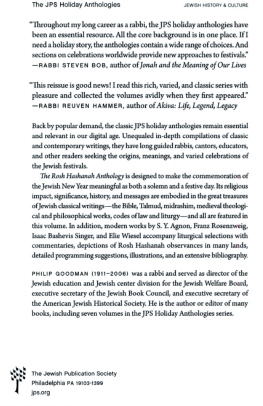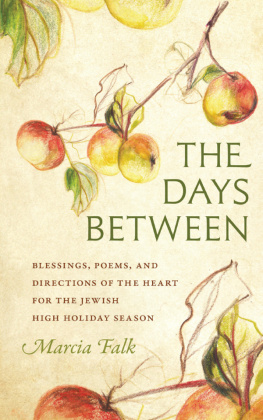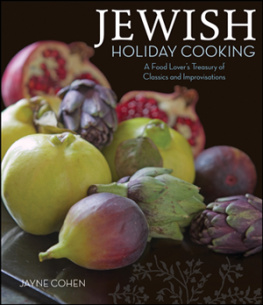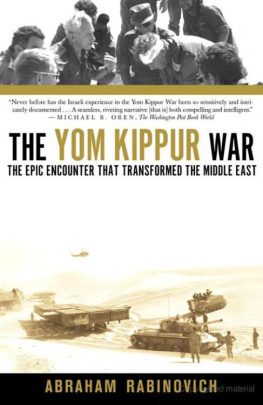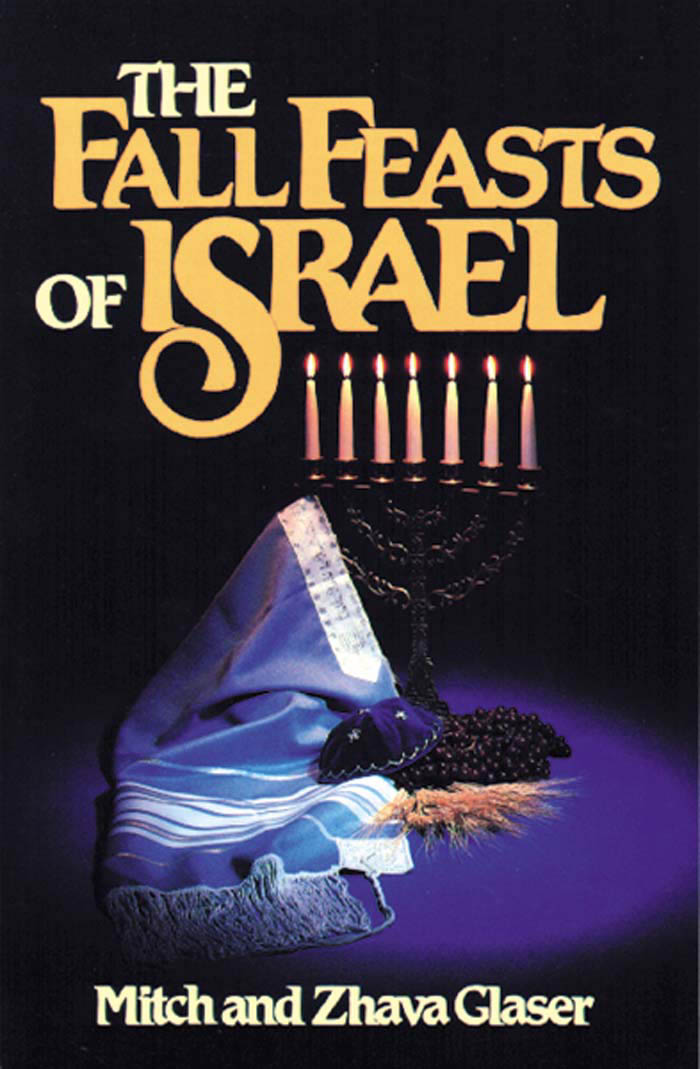
by
Mitch and Zhava Glaser
MOODY PRESS
CHICAGO
To Jodee Steiner,
for help in typing
the manuscript
To Larry Brandt
for help in research
1987 by
T HE M OODY B IBLE I NSTITUTE
OF C HICAGO
All rights reserved. No part of this book may be reproduced in any form without permission in writing from the publisher, except in the case of brief quotations embodied in critical articles or reviews.
All Scripture quotations, unless noted otherwise, are from the New American Standard Bible, 1960, 1962, 1963, 1968, 1971, 1972, 1973, 1975, and 1977 by The Lockman Foundation, and are used by permission.
Library of Congress Cataloging in Publication Data
Glaser, Mitch.
The fall feasts of Israel / by Mitch and Zhava Glaser.
p. cm.
Bibliography: p.
ISBN 0-8024-2539-9
1. Bible. O.T. LeviticusCriticism, interpretation, etc. 2. Fasts and feasts in the Bible. 3. Fasts and feasts in the BibleTypology. 4. Rosh ha-Shanah. 5. Sukkoth 6. Yom Kippur.
I. Glaser, Zhava. II. Title.
BS1255.2.G42 1987
222'.13064dc19 | 87-17832
CIP |
15 17 19 20 18 16
Printed in the United States of America
Contents
CHAPTER
I n the beginning, God created time. He made light and darkness, calling the light day and the darkness night: And there was evening and there was morning, one day (Genesis 1:5). Yet the Holy One is eternal and lives beyond the limitations of time and space. He created timethe sequence of eventsto serve as the arena where the heavenly meets the temporal, where God meets man. By His act of creation, the Sovereign of eternity was also crowned Lord of time.
The apostle John supplies additional knowledge on the Genesis record and tells us that the pre-incarnate Christ was the architect of creation. John wrote, All things came into being by Him, and apart from Him nothing came into being that has come into being. In Him was life, and the life was the light of men. And the light shines in the darkness, and the darkness did not comprehend it (John 1:3-5). The world of time and space were to become the special domain of the second Person of the Trinity. He is Creator, Redeemer, and King. Ultimately, His kingdom will include all that He has made, for heaven is His throne and the earth His footstool (Isaiah 66:1).
God intended events on earth to reflect heavenly realities. Thy will be done, on earth as it is in heaven (Matthew 6:10), Jesus taught us to pray. It is Gods desire that our lives be characterized by heavenly values, that the temporal reflect the eternal. As God the Father ruled over the heavens, so man, created in His image, was to rule for Him on the earth. The natural beauty of the world declared the glory of God (Psalm 19:1), but that was not enough for the Lord of the universe. He desired that every man and woman reflect the beauty of His holiness through the moral quality of their lives. But that was not to be.
Early in history, Adam and Eve revolted and ripped away from God the mantle of leadership, enthroning themselves in His stead. Adams rebellion would turn mans walk through history into a path of thorns. But God, moved by love for His creation, would not allow the anarchy to continue. Along with Adams Fall and the judgment came a ray of divine hope in the promise of a Redeemer, a seed of the woman, who would conquer the rebels and restore the rightful Lord of time to His throne (Genesis 3:15). But until that wonderful day when Christ rules His creation, time remains a battlefield between good and evil.
The apostle Paul tells us to redeem the time, for the days are evil (Ephesians 5:16). The battle waged to redeem time, to sanctify our days as holy unto the Lord, is a critical one for believers in the Messiah. The day will surely come when every knee shall bow to Him (Philippians 2:10), but until then we must spend every moment in service worthy of the Lord.
The sanctity of time and the Lords sovereignty over history were lessons that God sought to teach His chosen nation, Israel. Through the holy calendar given at Mount Sinai, the Lord of the Universe ordered the days of His people, focusing their attention on the heavenly realm. The feasts of the Lord were not given to enslave the Israelites but to free them to reflect on the Person, plan, and attributes of the Holy One of Israel. Through those special days, they were to recognize that He is Lord of every moment and must rule over every second of their lives.
The feasts and laws of the Lord were a tutor (Galatians 3:24) to lead the Israelites to the Savior. The apostle Paul described the Hebrew calendar as a mere shadow of what was to come. He wrote, Therefore let no one act as your judge in regard to food or drink or in respect to a festival or a new moon or a sabbath daythings which are a mere shadow of what is to come; but the substance belongs to Christ (Colossians 2:16-17). The apostle was not condemning those Jewish Christians who wished to continue celebrating the Jewish holidays. Rather, Paul asserted that the festivals lead to Christ.
It is appropriate, therefore, for a Jewish believer to celebrate these holidays in a way that is consistent with the apostolic faith and that exalts the Person of Jesus. Non-Jewish Christians as well must recognize that the festivals of Israel find their fulfillment in Christ and His new covenant. Jesus Himself said, Do not think that I came to abolish the law or the prophets; I did not come to abolish but to fulfill (Matthew 5:17). Christians who follow the church calendar will find that understanding the Levitical feasts adds a new depth and dimension to their lives. The feasts of Israel point to Jesus Christ as Lord of time and history.
In Leviticus 23, God calls the feasts of Israel My appointed times. It was important for the Israelites to remember that behind the intricate details of each feast stood the God who ordained them, to remember that He created time, and to remember that history bears the image of His presence. The feasts of Israel were Gods appointed times to remind His people that He was Lord of the calendar, the King of creation, and that He was to be worshiped every day. The feasts of the Lord have a great deal to teach all who have crowned Him Lord of their lives.
T HE H EBREW C ALENDAR
T he traditional division of twelve months to the year is found in Scripture. In 1 Kings 4:7, the recorder of sacred history writes, And Solomon had twelve deputies over all Israel, who provided for the King and his household; each man had to provide for a month in the year (see also 1 Chronicles 27:2-15). The ancient Hebrews observed a twelve-month lunar year based on Psalm 104:19, He made the moon for the seasons; the sun knows the place of its setting.
The length of a lunar month, the period between two new moons, is 29 days, 12 hours, 44 minutes, and 2.8 seconds.year in which a thirteenth month was added after the twelfth month of Adar (roughly equivalent to March).
T HE N EW M OON
The precise determination of the new moon has always been important to the Hebrews. Not knowing the exact time of the new moon could upset their entire calendar.


